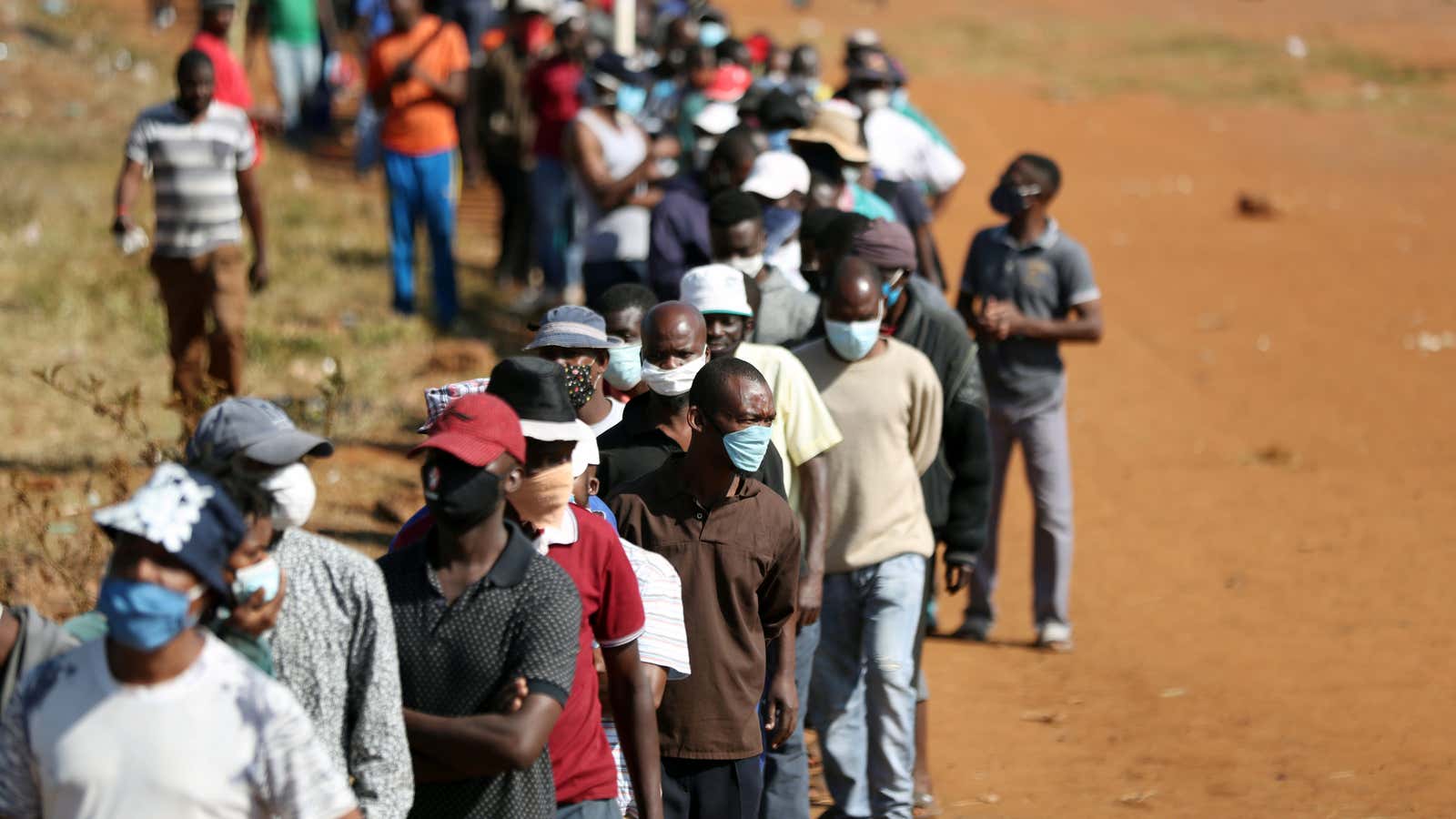Making estimates is always a difficult task. This is especially true when it comes to economic forecasts for African countries. One of many reasons is large portions of the economies are in the informal sector and by definition offer fewer reliable data sources with which to make estimates.
But when it comes to the global economic crisis in the wake of the Covid-19 pandemic, even a reliably conservative institution like the IMF has been forced to revise its estimates just two months after its first prognosis.
On the top line, it now estimates the Sub-Saharan Africa region’s economy will shrink by -3.2% this year, that’s 1.6 percentage points more than it said in April. Growth is now expected to collapse in many countries especially those dependent on tourism and resources, such as oil and mineral exporters. Growth in more diversified non-resource based economies is expected to come to a “near standstill.”
Some of this might have seemed likely in April when IMF forecast 1.6% shrinkage, World Bank estimated a -2.1% to -5.1% recession. But as IMF Africa director Abebe Aemro Selassie explains to Quartz Africa this update better captures the realities of the fast-changing events on the ground in Africa and elsewhere in the world. “We realized the global economic environment was much weaker than we were expecting and that the periods of lockdowns in some African countries were even longer than we were envisaging.”
Indeed, IMF now forecasts the global economy to shrink by -4.9%, revised down from -3%.
While Sub Saharan Africa’s growth projection looks bad, a key longer-term concern is how real per capita GDP in the region is expected to contract by as much as -5.4% this year. The IMF says this will take the per capita GDP 7 percentage points below the level projected last October. In fact, it could effectively wipe out nearly ten years of progress made in reducing poverty in the region.
Growth in Sub Saharan Africa is expected to gradually recover if the pandemic slows down in the second half of 2020 with the IMF forecasting a return to 3.4% growth next year (it previously projected 4% growth). One of the reasons for Africa’s “shallower” growth than the global 2021 forecast of 5.4% is that Sub Saharan Africa countries have fewer and smaller policy options than more advanced economies. This is why the region’s largest economies Angola, Nigeria and South Africa will not see real GDP growth return to pre-crisis levels till 2023 or 2024.
The challenge for the IMF and other economic prognosticators is it’s very difficult to say with any degree of confidence the pandemic will be under control anytime soon, especially in Africa. A common feature across several African countries is even as they’ve ended lockdowns or opened up, the Covid-19 case load numbers have accelerated. The numbers in Africa are still relatively low—lower on a “per million” basis than Europe and Latin America (though higher than Asia).
But while it’s often said Africa’s economic crisis could be worse than the pandemic health crisis, IMF’s Abebe Selassie calls this a “false dichotomy”. “If you don’t have the disease under control you’re not going to have an economic recovery, it’s not going to be durable.”
Sign up to the Quartz Africa Weekly Brief here for news and analysis on African business, tech and innovation in your inbox
